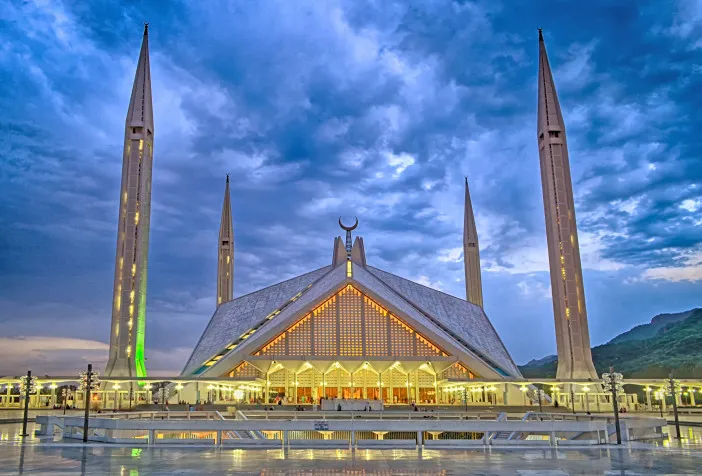Faisal Mosque Photos
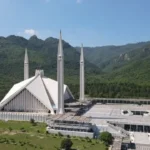
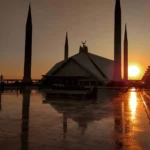
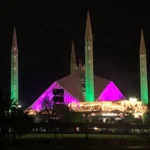
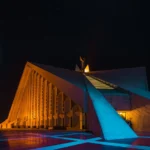
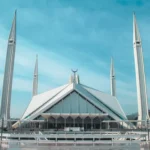
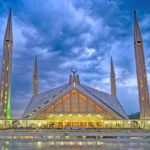
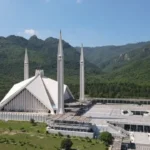
The Faisal Mosque stands is a beacon of Islamic architecture and a symbol of unity for Pakistan. It is named after King Faisal bin Abdulaziz of Saudi Arabia, who generously funded its construction. This iconic mosque is not only a place of worship but also a cultural landmark that attracts visitors from around the world. The Faisal Mosque’s unique design, historical significance, and serene environment make it a must-visit destination for anyone traveling to Islamabad.
The Idea Behind the Mosque
In 1966, during his visit to Pakistan, King Faisal bin Abdulaziz proposed building a grand mosque in Islamabad that would represent the close friendship between Saudi Arabia and Pakistan. His vision was to create a space for worship that would also serve as a symbol of unity among Muslims.
To bring this dream to life, King Faisal donated $28 million, funding the mosque’s construction. The project officially began with an international design competition in 1969, where Turkish architect Vedat Dalokay’s innovative design was selected. Dalokay’s bold vision challenged traditional mosque architecture, creating a structure that would blend modern aesthetics with Islamic symbolism.
Prayer Times in Faisal Mosque
The Faisal Mosque in Islamabad follows standard Islamic prayer times, which vary daily based on the position of the sun. Here’s a general guideline for the five daily prayers at Faisal Mosque:
Five Prayer Times in Islamabad
-
- Fajr (Dawn): Just before sunrise
-
- Dhuhr (Noon): After midday when the sun has passed its zenith
-
- Asr (Afternoon): Mid-afternoon, when the shadow of an object is equal to its height
-
- Maghrib (Sunset): Immediately after sunset
-
- Isha (Night): When the twilight has disappeared and it’s fully dark
For exact prayer times, it’s best to refer to local prayer time apps or Islamic websites, as the times shift slightly each day depending on the date and location.
Friday and Eid prayer times
The Friday prayer (Jummah) and Eid prayer times at Faisal Mosque generally follow these guidelines:
Friday Prayer (Jummah)
-
- Khutbah (Sermon): Typically starts between 1:00 PM and 1:30 PM.
-
- Jummah Prayer: Performed shortly after the sermon, usually around 1:30 PM to 2:00 PM.
Eid Prayer
-
- Eid ul-Fitr and Eid ul-Adha prayers: Usually offered shortly after sunrise.
-
- The prayers typically take place between 7:00 AM and 8:00 AM, but this can vary slightly based on the announcement by local authorities or the mosque itself.
-
- Eid ul-Fitr and Eid ul-Adha prayers: Usually offered shortly after sunrise.
It’s advisable to confirm exact prayer times closer to the specific dates, as they can vary.
A Unique Architectural Masterpiece
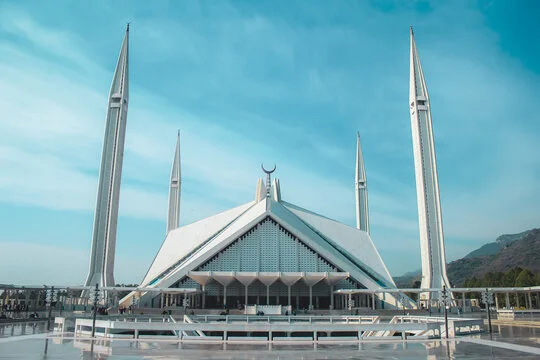
Dalokay’s design is unlike the typical domes and arches of most mosques. Inspired by a Bedouin tent, the mosque’s shape reflects the simplicity of desert life. At the heart of the mosque is a massive eight-sided concrete shell that rises majestically from an expansive courtyard.
The structure is surrounded by four slender minarets—each standing 88 meters (289 feet) tall. These minarets add to the mosque’s elegance, blending Turkish design elements with a contemporary style. Inside, the main prayer hall is triangular, symbolizing openness and peace, with enough space to accommodate more than 10,000 worshippers at a time.
Construction and Inauguration
The construction of the Faisal Mosque began in 1976 and took nearly a decade to complete, officially opening to the public on June 18, 1986. The Pakistan Public Works Department supervised the project, with laborers and engineers from both Pakistan and Saudi Arabia contributing to the effort. Since its inauguration, the mosque has become one of Pakistan’s most iconic landmarks.
Exploring the Faisal Mosque
The Grand Prayer Hall

The main prayer hall’s design feels both peaceful and majestic. Light streams through stained-glass windows, illuminating the white marble interior, which adds to the hall’s peaceful ambiance.
The walls and ceilings are beautifully decorated with Arabic calligraphy by renowned Pakistani artist Sadequain. These verses from the Quran enhance the mosque’s spiritual atmosphere, offering a blend of art and faith. At the center is the mihrab, which points towards Mecca, acting as a focal point for worshippers.
The Courtyard and Reflection Pools
Surrounding the prayer hall is a large open courtyard. It can accommodate an additional 40,000 people during prayer times, especially on Fridays and religious festivals. The courtyard, paved with smooth white marble, is dotted with reflecting pools, creating a peaceful environment for prayer and reflection.
The simplicity of the courtyard’s design mirrors the mosque’s overall aesthetic, making it a peaceful space where visitors can pause and soak in the serenity.
The Towering Minarets
The mosque’s four towering minarets are some of its most striking features. Each minaret, tapering elegantly, offers a modern twist on traditional Turkish designs. Inside, spiral staircases lead to observation points, providing panoramic views of Islamabad and the Margalla Hills.
The minarets also serve a functional role. Loudspeakers installed at the top broadcast the adhan (call to prayer), which resonates beautifully across the city. At night, the illuminated minarets create a mesmerizing sight against the dark sky, adding to the mosque’s allure.
The Library and Museum
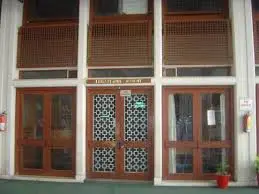
Within the mosque complex, visitors can explore a small library and museum. The library houses rare Islamic texts, manuscripts, and contemporary books on theology and Islamic history. So, it serves as a valuable resource for students and scholars.
The museum offers an engaging look into the history and construction of the Faisal Mosque, with photographs, models, and artifacts on display. There is also a section dedicated to King Faisal’s contributions, honoring the legacy of the man behind the mosque’s creation.
A Symbol of Unity and Cultural Heritage
Beyond its architectural beauty, the Faisal Mosque symbolizes unity and friendship. Its construction represents the enduring ties between Pakistan and Saudi Arabia and serves as a place where people from different backgrounds come together for prayer and reflection. Its open design and inclusive atmosphere welcome both worshippers and visitors, reinforcing the spirit of harmony.
For residents of Islamabad, the mosque is not just a place of worship but also a community hub where religious events, lectures, and gatherings take place. It fosters a sense of belonging and plays a significant role in the spiritual life of the city.
Practical Information for Visitors
-
- Location: The mosque is situated at the western edge of Islamabad, at the foothills of the beautiful Margalla Hills.
-
- Visiting Hours: The Faisal Mosque is open every day. Non-Muslim visitors are welcome but are advised to avoid visiting during prayer times out of respect for worshippers.
-
- Admission: Entry to the mosque is free, although donations are appreciated to help maintain the mosque.
-
- Dress Code: Visitors should dress modestly, with men and women wearing clothing that covers their arms and legs. Women are encouraged to cover their heads with a scarf, and all visitors must remove their shoes before entering the prayer hall.
Final Thoughts
The Faisal Mosque is not just a religious structure—it is a symbol of Pakistan’s cultural identity and a place where faith, history, and architecture converge. Its breathtaking design, peaceful surroundings, and rich history make it an unforgettable experience for anyone visiting Islamabad.
Whether you come to admire its architectural splendor, explore the cultural exhibits, or simply enjoy a quiet moment of reflection, the Faisal Mosque offers a profound glimpse into Pakistan’s heart and soul. As you walk through its halls and courtyards, you can feel the deep sense of spirituality and unity that this mosque embodies. It is a reminder that faith can be a bridge that connects people across boundaries and cultures.

